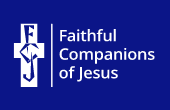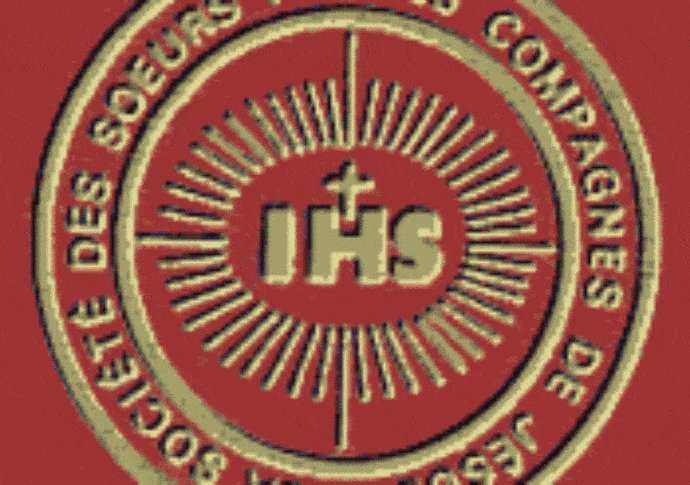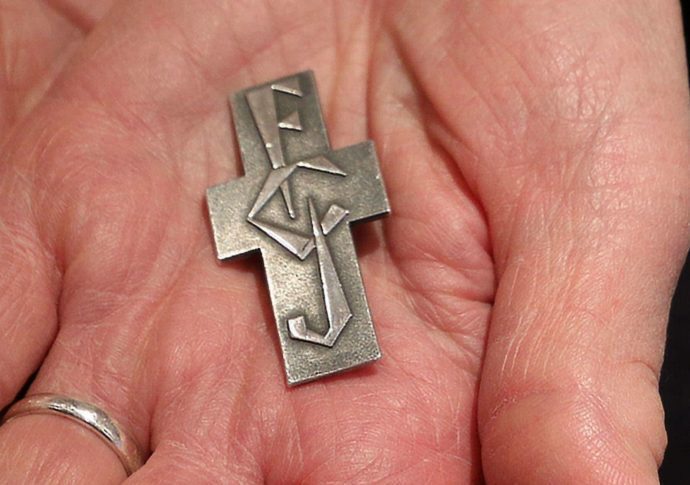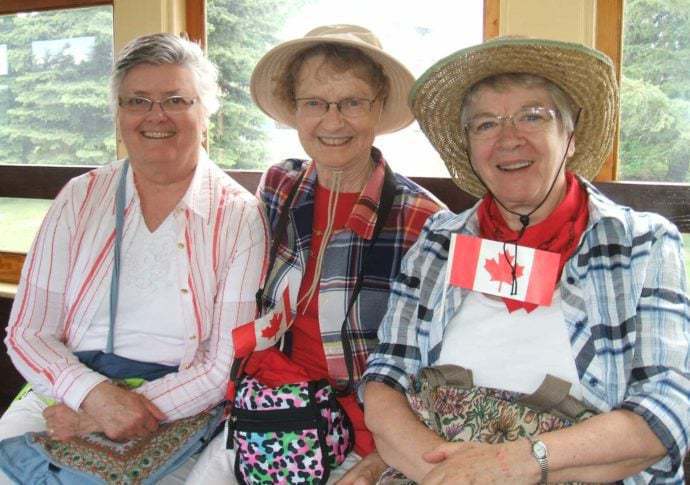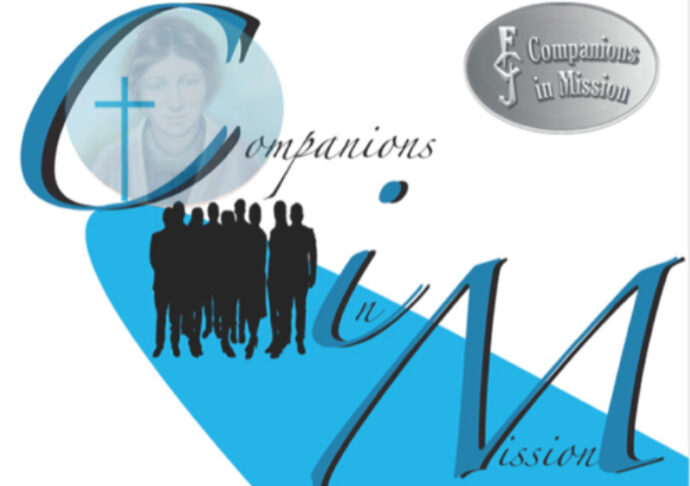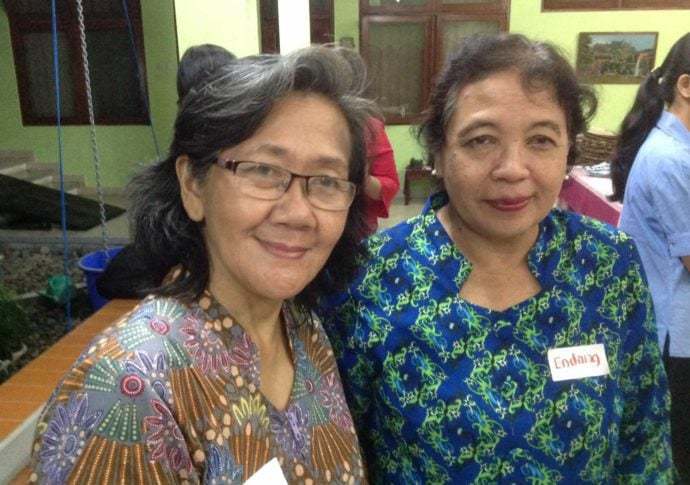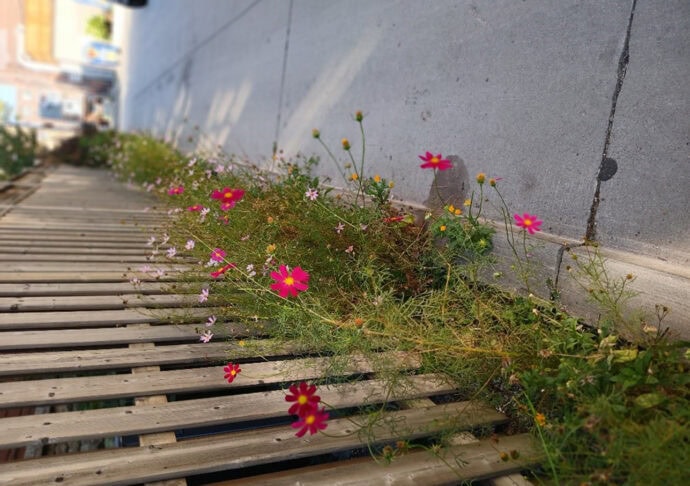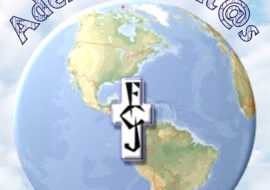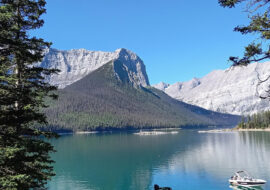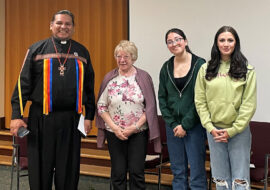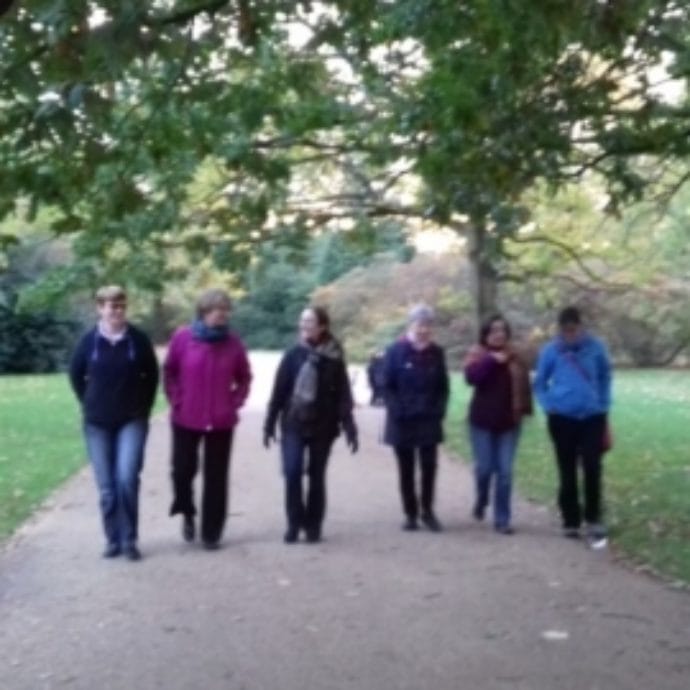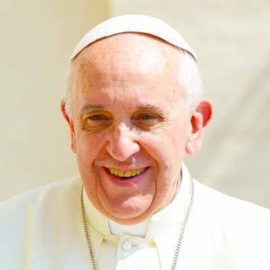Submitted by Sr Madeleine fcJ, from the Toronto community
For much of 2024, I was living in Toronto, Ontario. Many of the alleyways behind houses and apartment complexes are bordered with trash (litter) and biomass from fallen leaves and weeds. In some alleyways, the biomass has accumulated enough to grow weeds along the edges of the pavement.
The idea for this project came about because, seeing all the trash in the alleyways, I thought that if I planted wildflower seeds in available, unused spaces, it could help restore butterfly, bee, and other insect populations and possibly inspire people not to litter. As I walked home from early morning Mass in the summer and fall of 2023, I saw lots of annual and perennial flowers in people’s gardens being visited by bees and butterflies. Many of the plants had seeds ready for harvesting. I spoke with several homeowners and renters and asked permission to collect seeds from their gardens. I took only those from plants that bees and butterflies were visiting, plants native to North America or plants derived from native wildflowers.

I collected lots of seeds over the months! The main species were: columbine, marigold, cosmos, Black-eyed Susan, California poppy, calendula, ox-eye daisies, and lupine. In all, I harvested about 2 liters of seed. I stopped collecting when I thought I had enough. What I’ve learned in spring 2024 is that I can always use more seeds!
I cleaned the trash from a 10 inch wide and 50 foot long strip of gravelly soil next to a fence in the alley near our house. Most days, I picked up litter from this strip of land, usually plastic water bottles, coffee cups and their plastic lids, and candy wrappers. There are several barberry bushes growing in the strip, planted by our neighbor to discourage dogs from using this place as a toilet. There are also three flower boxes near the Palmerston Avenue end of the alley, which Sr. Lois Anne, fcJ has planted for the past few years.

I scattered the seeds on this strip of land and covered them lightly with some free compost given by the municipality. I also sprinkled “harvested” potting soil from last year’s hanging planters that people put out for trash collection and used coffee grounds from a nearby coffee shop. The seeds were given a chance to grow.
This is a wilding project, not a gardening project…. no watering, no weeding I do continue to pick up trash….. I used to think about “rewilding”, but that implies bringing back the wildlife that originally grew in a place. I am bringing together plants that are a novel combination to give nature a chance to evolve something new!
Part of this project is to generate community awareness of the needs of insects, particularly pollinators, upon which so many plants and animals depend. Asking people to harvest seeds in 2023 was a form of community involvement. The 2024 effort involved talking with passers-by and neighbors about the project. I have had enthusiastic interest from everyone, and some have contributed soil and other seeds, thanks be to God. I kept my yes open and found quite a few other spaces to plant wildflowers. It’s nice to turn wasteland into a happy place!

